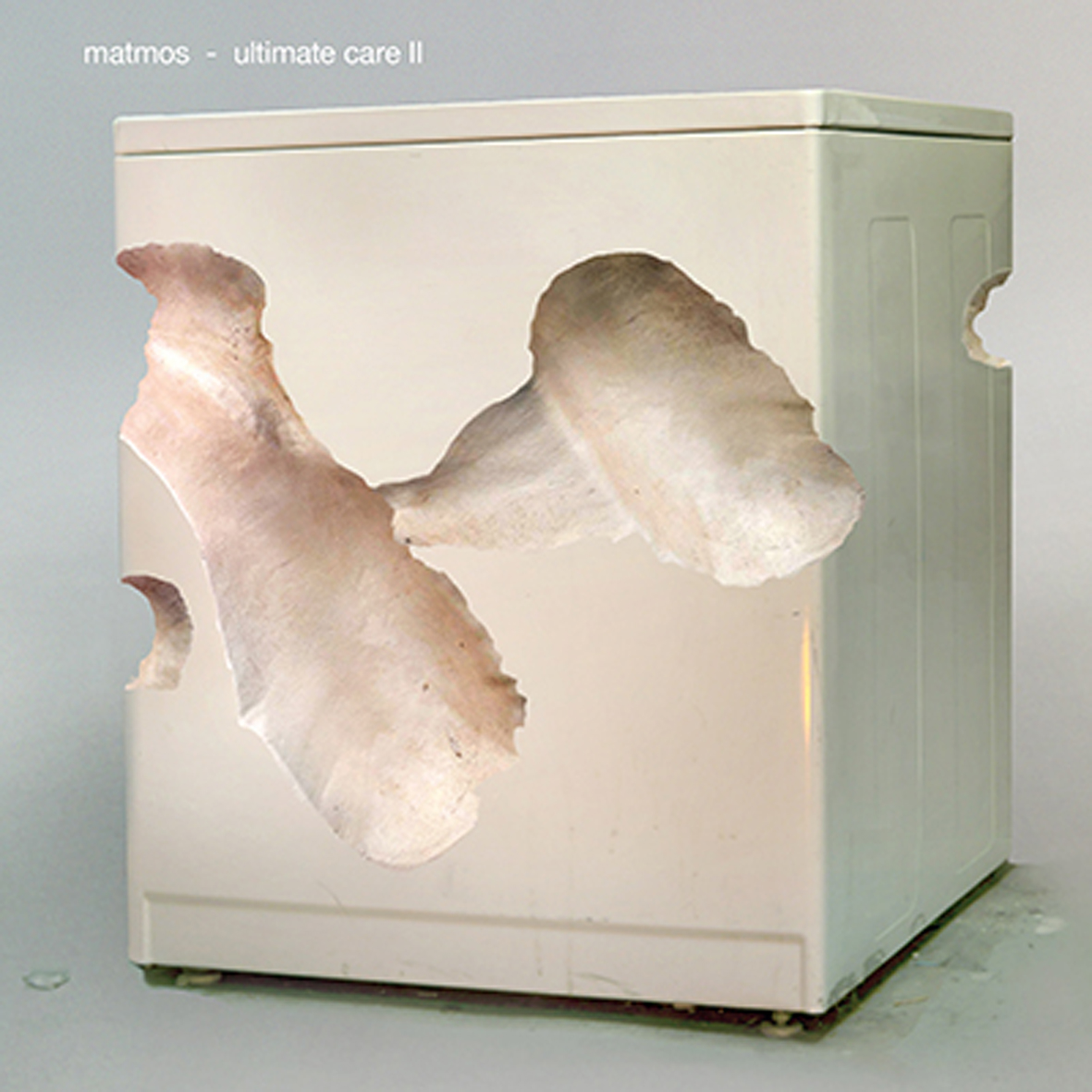 Cloudland Canyon is a band that has seemingly been around forever, remaining constantly in the periphery, yet never quite making much of an impression on me with their reverb-drenched, chameleonic psych/krautrock revivalism.  I always saw them as an almost-good band of people with great record collections who were a bit too self-conscious, over-meticulous, and reverent to fully realize their potential.  On this, improbably only their third album since forming in 2002, they have cleverly punched-up their sound with a lot of fun ‘80s-style electronic grooves, resulting in something unexpectedly resembling a Chris & Cosey/Panda Bear mash-up at times.  That admittedly innovative aesthetic still does not click entirely for me, but the handful of songs that lean heaviest on hooks and retro-dance grooves are quite good.  And some of the other ones are even better.
Cloudland Canyon is a band that has seemingly been around forever, remaining constantly in the periphery, yet never quite making much of an impression on me with their reverb-drenched, chameleonic psych/krautrock revivalism.  I always saw them as an almost-good band of people with great record collections who were a bit too self-conscious, over-meticulous, and reverent to fully realize their potential.  On this, improbably only their third album since forming in 2002, they have cleverly punched-up their sound with a lot of fun ‘80s-style electronic grooves, resulting in something unexpectedly resembling a Chris & Cosey/Panda Bear mash-up at times.  That admittedly innovative aesthetic still does not click entirely for me, but the handful of songs that lean heaviest on hooks and retro-dance grooves are quite good.  And some of the other ones are even better.
Two new shows just for you. We have squeezed out two extended release episodes for this weekend to get you through this week. They contain mostly new songs but there's also new issues from the vaults. The first show features music from Rider/Horse, Mint Field, Robert Aiki Aubrey Lowe, Anastasia Coope, ISAN, Stone Music, La Securite, Bark Psychosis, Jon Rose, Master Wilburn Burchette, Umberto, Wand, Tim Koh, Sun An, and Memory Drawings. The second episode has music by Laibach, Melt-Banana, Chuck Johnson, X, K. Yoshimatsu, Dorothy Carter, Pavel Milyakov, Violence Gratuite, Mark Templeton, Dummy, Endon, body / negative, Midwife, Alberto Boccardi, Divine. Cow in Maui from Veronika in Vienna. Get involved: subscribe, review, rate, share with your friends, send images! |



 In a continuation of an amusing trend begun with 2014’s stellar Feeling Tropical Feeling Romantic Feeling Ill mixtape, Demdike Stare have yet again coaxed another odd non-Shapes release out of the singular Mica Levi.  This one is perhaps even stranger than its predecessor, as it is centered around an infectiously skittering and warbling 2-step "single" that Levi and frequent collaborator Tirzah released to YouTube all the way back in 2011.  The rest of Taz and May Vids is filled out with a few other excellent Tirzah collaborations, a Demdike Stare remix of a Tirzah collaboration, and a couple of very different outliers.  While the Brother May-assisted "More Red" is admirably bonkers, the primary appeal of this EP is definitely the murky, poppy, and beautifully warped Tirzah pieces.  Admittedly, it seems like Sean Canty and Miles Whittaker had quite a struggle in collecting even a mere EP's worth of material (the three Tirzah songs add up to barely 8 minutes), but these scraps from the vault offer some dazzling (if fleeting) glimpses of Levi's skewed and inscrutable pop genius.
In a continuation of an amusing trend begun with 2014’s stellar Feeling Tropical Feeling Romantic Feeling Ill mixtape, Demdike Stare have yet again coaxed another odd non-Shapes release out of the singular Mica Levi.  This one is perhaps even stranger than its predecessor, as it is centered around an infectiously skittering and warbling 2-step "single" that Levi and frequent collaborator Tirzah released to YouTube all the way back in 2011.  The rest of Taz and May Vids is filled out with a few other excellent Tirzah collaborations, a Demdike Stare remix of a Tirzah collaboration, and a couple of very different outliers.  While the Brother May-assisted "More Red" is admirably bonkers, the primary appeal of this EP is definitely the murky, poppy, and beautifully warped Tirzah pieces.  Admittedly, it seems like Sean Canty and Miles Whittaker had quite a struggle in collecting even a mere EP's worth of material (the three Tirzah songs add up to barely 8 minutes), but these scraps from the vault offer some dazzling (if fleeting) glimpses of Levi's skewed and inscrutable pop genius.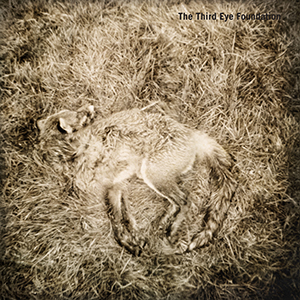 Matt Elliott’s first release under the Third Eye Foundation moniker now sits at a full two decades ago. What is most striking is the fact that, considering how deeply rooted in the era drum 'n' bass/jungle music sounds now, Semtex is largely still as fresh sounding today as it was then. Because of less reliance on the overused "Amen" and "Funky Drummer" loops (though they appear), Elliott produced a work with significantly more depth and nuance, which is why it seems much more timeless than its contemporaries. Reissued here with a bonus disc of demos from the same era, and a lengthy selection of downloadable extra material, it is a nearly four and a half hour revisiting of one of the seminal albums of the mid 1990s.
Matt Elliott’s first release under the Third Eye Foundation moniker now sits at a full two decades ago. What is most striking is the fact that, considering how deeply rooted in the era drum 'n' bass/jungle music sounds now, Semtex is largely still as fresh sounding today as it was then. Because of less reliance on the overused "Amen" and "Funky Drummer" loops (though they appear), Elliott produced a work with significantly more depth and nuance, which is why it seems much more timeless than its contemporaries. Reissued here with a bonus disc of demos from the same era, and a lengthy selection of downloadable extra material, it is a nearly four and a half hour revisiting of one of the seminal albums of the mid 1990s.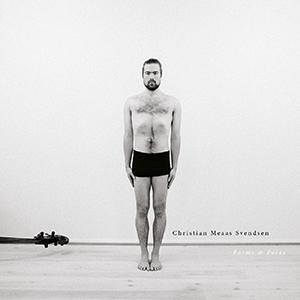 My first experience with Svendsen's work was his W/M debut split release with guitarist Christian Winther. Even though it was their first official release, both were well-established Norwegian artists who approached their respective instruments in ways that generated strange and unexpected sounds from them. Svendsen's newest work expands upon that, with four performances using only double bass, but played with a physicality and performance that blurs the lines between Svendsen himself and the instrument he plays.
My first experience with Svendsen's work was his W/M debut split release with guitarist Christian Winther. Even though it was their first official release, both were well-established Norwegian artists who approached their respective instruments in ways that generated strange and unexpected sounds from them. Svendsen's newest work expands upon that, with four performances using only double bass, but played with a physicality and performance that blurs the lines between Svendsen himself and the instrument he plays. Clodagh Simonds has had a lengthy and storied career, working with the likes of Mike Oldfield and her own 1970s band Mellow Candle, and her return after a lengthy break with Fovea Hex beginning in 2005. With the rest of the band, including such recognizable artists Michael Begg, Colin Potter, Laura Sheeran. Cora Venus Lunny, and Kate Ellis, and special guests Justin Grounds and Brian Eno, this EP is a captivating, achingly stunning suite of music that defies any sort of classification.
Clodagh Simonds has had a lengthy and storied career, working with the likes of Mike Oldfield and her own 1970s band Mellow Candle, and her return after a lengthy break with Fovea Hex beginning in 2005. With the rest of the band, including such recognizable artists Michael Begg, Colin Potter, Laura Sheeran. Cora Venus Lunny, and Kate Ellis, and special guests Justin Grounds and Brian Eno, this EP is a captivating, achingly stunning suite of music that defies any sort of classification. In his liner notes for The New Attractive, Yu Wakao writes, "In a sense, there is no need for individuality in noise music—ultimately, noise can only be hindered by the individual." Taste, he concludes, is far more important. It’s what separates this noise from that noise, the sound of traffic outside your car window from whatever is on the stereo. It’s a provocative claim because Takuji Naka and Tim Olive’s music on The New Attractive both affirms and refutes it, and because the distinction between taste and individuality is ambiguous. How are we to separate the two? Which one determines the instrument that the artist brings to their art? Which influences their preference for color, duration, and texture? What about volume? Naka and Olive certainly seem present in their work—the use of magnetic pickups and mechanical turbulence is familiar enough, as are the congealed puffs of electronic haze. The brevity of these five untitled tracks, their loose atmospheric structures, and the quiet, almost casual quality of the duo’s interactions all sound deliberate, the product of individuals with distinct tastes. Those qualities rise up and disperse across a wider plateau, however, propelling the music and musicians toward a nebulous border where specifics fall apart.
In his liner notes for The New Attractive, Yu Wakao writes, "In a sense, there is no need for individuality in noise music—ultimately, noise can only be hindered by the individual." Taste, he concludes, is far more important. It’s what separates this noise from that noise, the sound of traffic outside your car window from whatever is on the stereo. It’s a provocative claim because Takuji Naka and Tim Olive’s music on The New Attractive both affirms and refutes it, and because the distinction between taste and individuality is ambiguous. How are we to separate the two? Which one determines the instrument that the artist brings to their art? Which influences their preference for color, duration, and texture? What about volume? Naka and Olive certainly seem present in their work—the use of magnetic pickups and mechanical turbulence is familiar enough, as are the congealed puffs of electronic haze. The brevity of these five untitled tracks, their loose atmospheric structures, and the quiet, almost casual quality of the duo’s interactions all sound deliberate, the product of individuals with distinct tastes. Those qualities rise up and disperse across a wider plateau, however, propelling the music and musicians toward a nebulous border where specifics fall apart.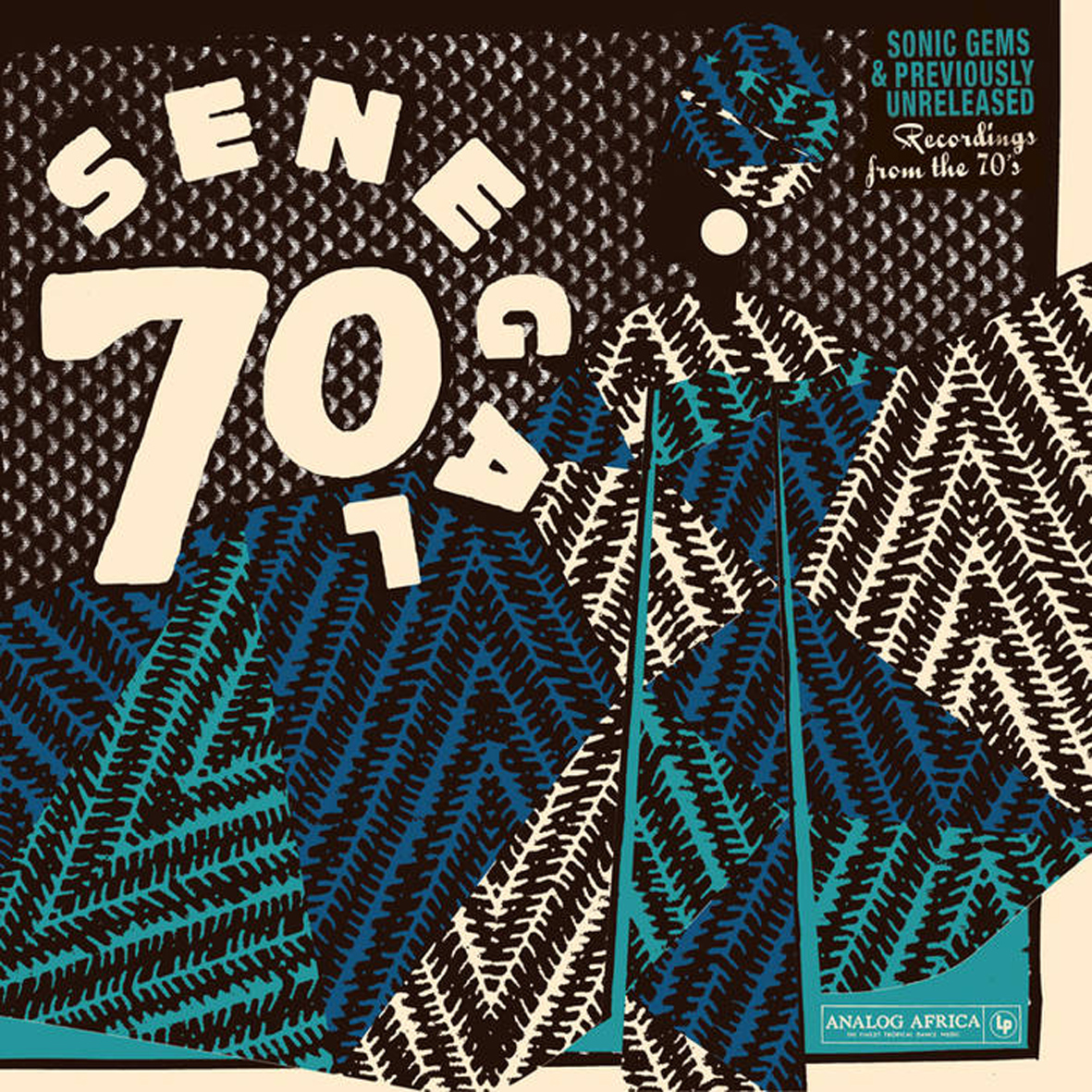 There are very few people around making better compilations than Analog Africa’s Samy Ben Redjeb.  For this latest treasure trove of newly unearthed obscurities, Samy teamed up with Teranga Beat's Adamantios Kafetzis, who tracked down Senegalese sound engineer Moussa Diallo back in 2009 and digitized his large archive of tape reels.  Remarkably, only five songs from that big score made it onto the album, so the duo must have made some very hard decisions in narrowing down Senegal 70 to its lean and consistently excellent 13-song song incarnation.  Happily, one of the songs that made the cut is a previously unreleased piece by the incomparable and woefully underdocumented Amara Touré.  Also present is the long-running and internationally successful Orchestra Baobab, but many of the lesser known artists shine just as brightly (if not more so), making this one of Analog Africa's stronger compilations to date.
There are very few people around making better compilations than Analog Africa’s Samy Ben Redjeb.  For this latest treasure trove of newly unearthed obscurities, Samy teamed up with Teranga Beat's Adamantios Kafetzis, who tracked down Senegalese sound engineer Moussa Diallo back in 2009 and digitized his large archive of tape reels.  Remarkably, only five songs from that big score made it onto the album, so the duo must have made some very hard decisions in narrowing down Senegal 70 to its lean and consistently excellent 13-song song incarnation.  Happily, one of the songs that made the cut is a previously unreleased piece by the incomparable and woefully underdocumented Amara Touré.  Also present is the long-running and internationally successful Orchestra Baobab, but many of the lesser known artists shine just as brightly (if not more so), making this one of Analog Africa's stronger compilations to date. Like her last record (2013's Character) and much of her solo material, Asperities is Kent, her cello, and a tasteful amount of processing and effects. While her list of collaborators are a veritable who’s-who of modern experimental music, her solo work is just as strong, but stripped down and intimate enough to place all the emphasis on her and her instrument. These restrained arrangements, however, serve to bring out the finest and most nuanced details in her playing and strong sense of composition.
Like her last record (2013's Character) and much of her solo material, Asperities is Kent, her cello, and a tasteful amount of processing and effects. While her list of collaborators are a veritable who’s-who of modern experimental music, her solo work is just as strong, but stripped down and intimate enough to place all the emphasis on her and her instrument. These restrained arrangements, however, serve to bring out the finest and most nuanced details in her playing and strong sense of composition.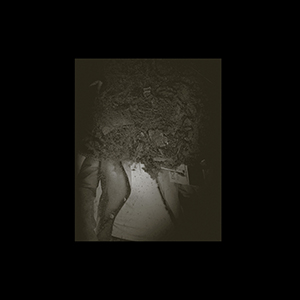 The titular MB on this record is not the Italian noise pioneer, but GOG's Michael Bjella with Robert Skrzyński (of Micromelancolié) in collaboration. Black Box Recordings may not resemble Bianchi in any obvious way, but the duo have a similar raison d'être of utilizing purely dissonant electronics, roughly recorded found sounds, and the occasional interjection of conventional melody and instrumentation. Like its title would indicate, it is a bleak and disturbing collection of sounds that could easily be the final recordings of a cataclysmic event.
The titular MB on this record is not the Italian noise pioneer, but GOG's Michael Bjella with Robert Skrzyński (of Micromelancolié) in collaboration. Black Box Recordings may not resemble Bianchi in any obvious way, but the duo have a similar raison d'être of utilizing purely dissonant electronics, roughly recorded found sounds, and the occasional interjection of conventional melody and instrumentation. Like its title would indicate, it is a bleak and disturbing collection of sounds that could easily be the final recordings of a cataclysmic event.